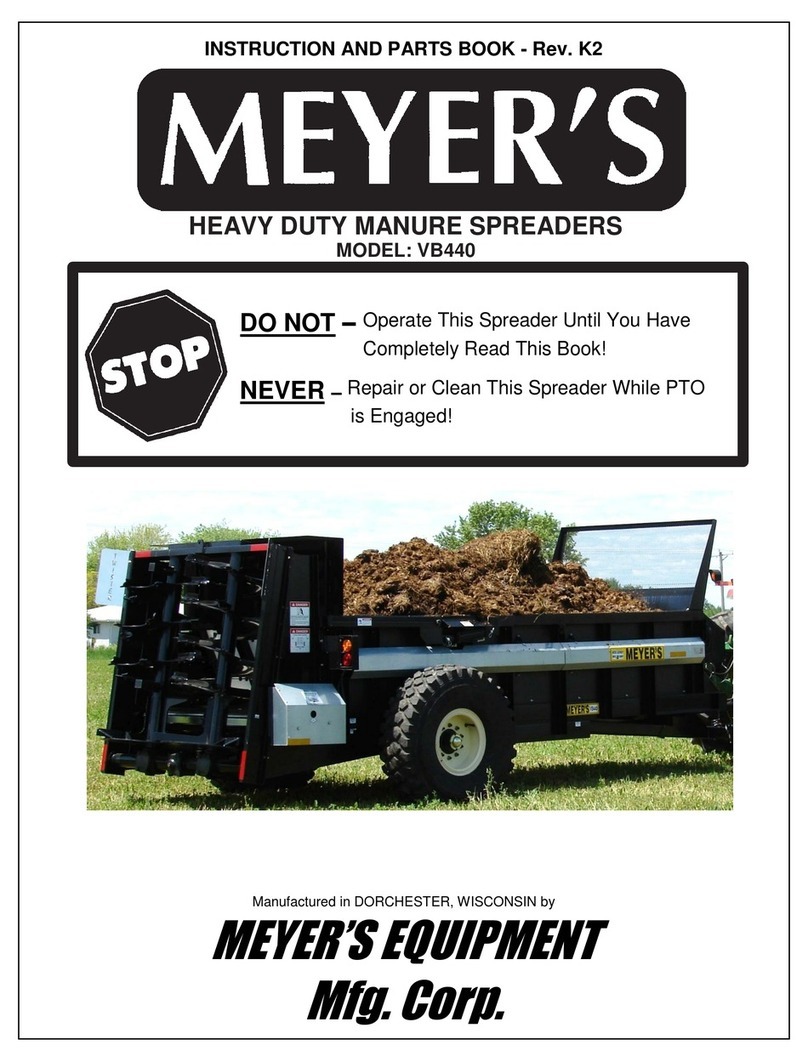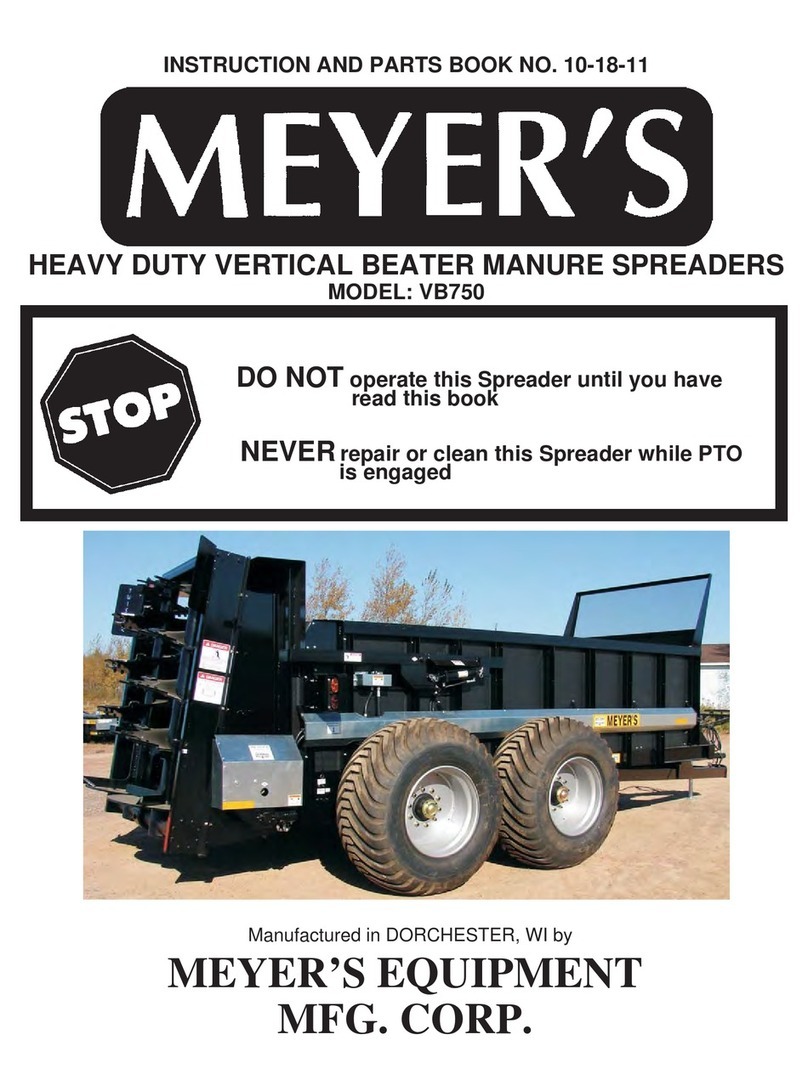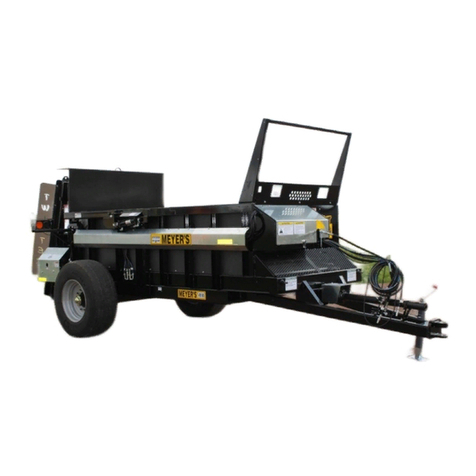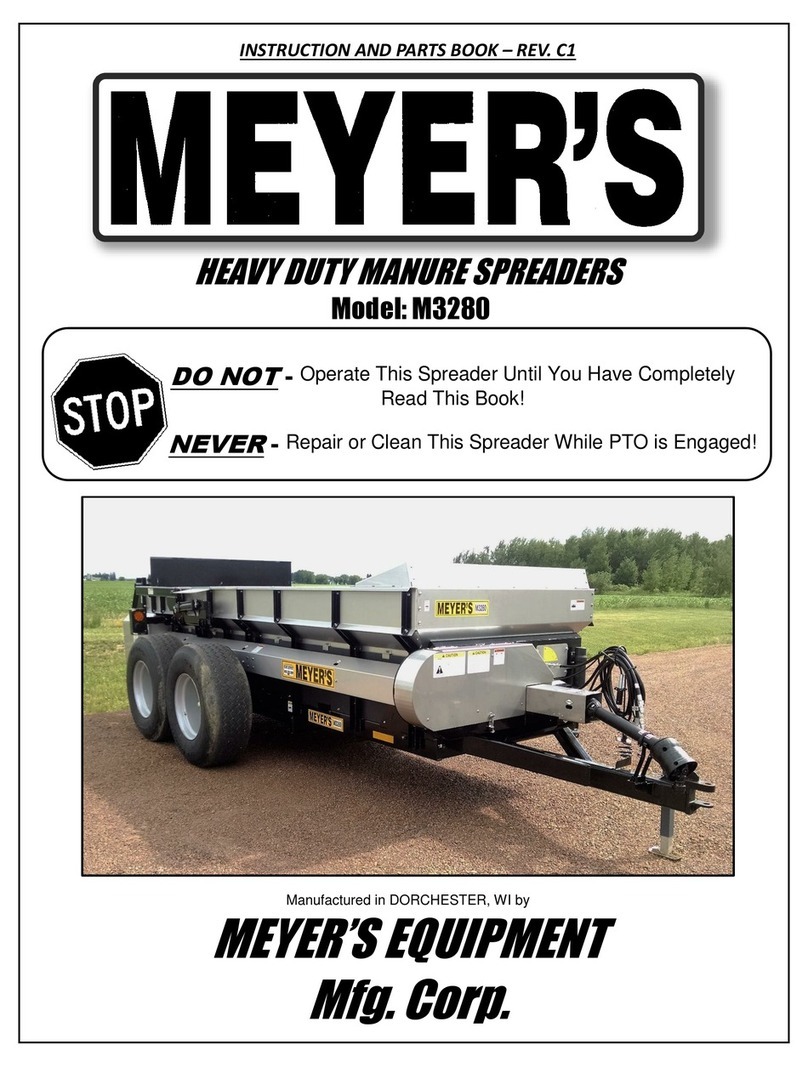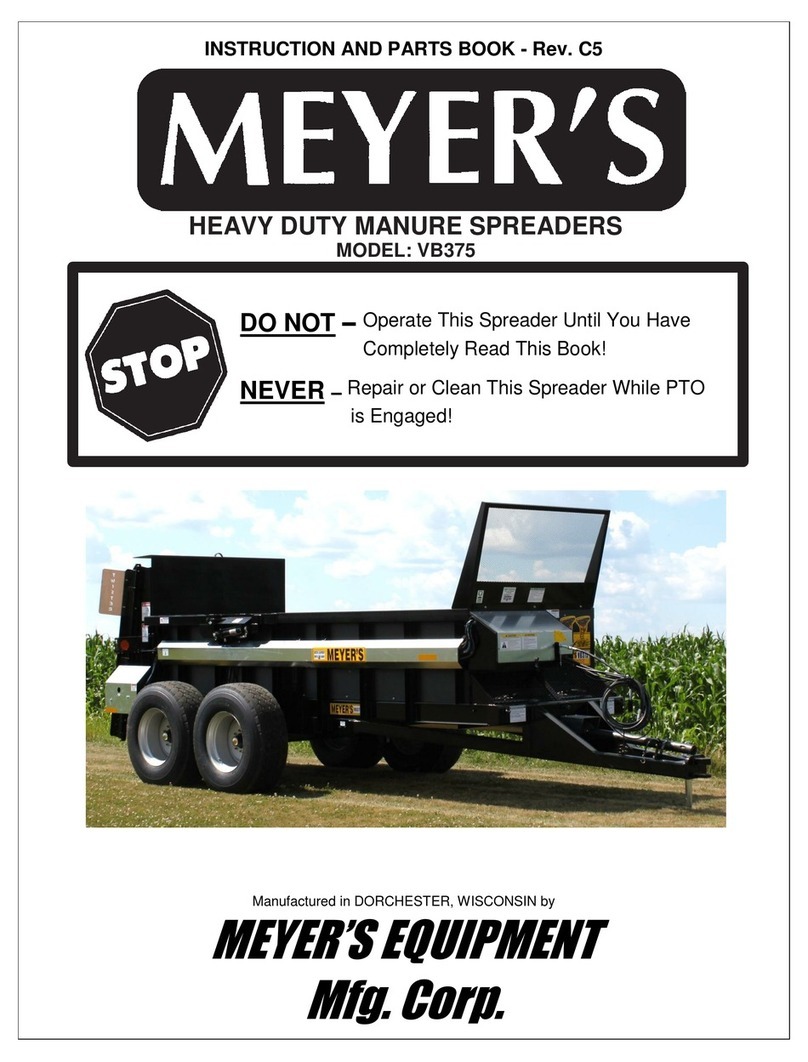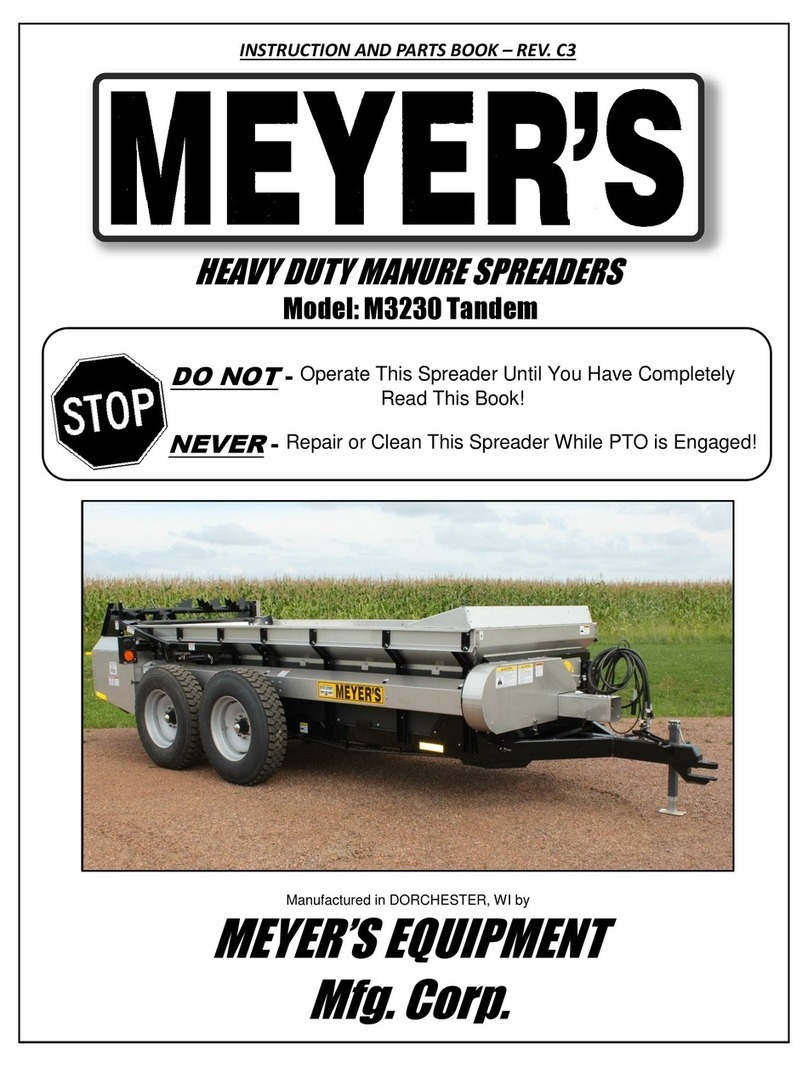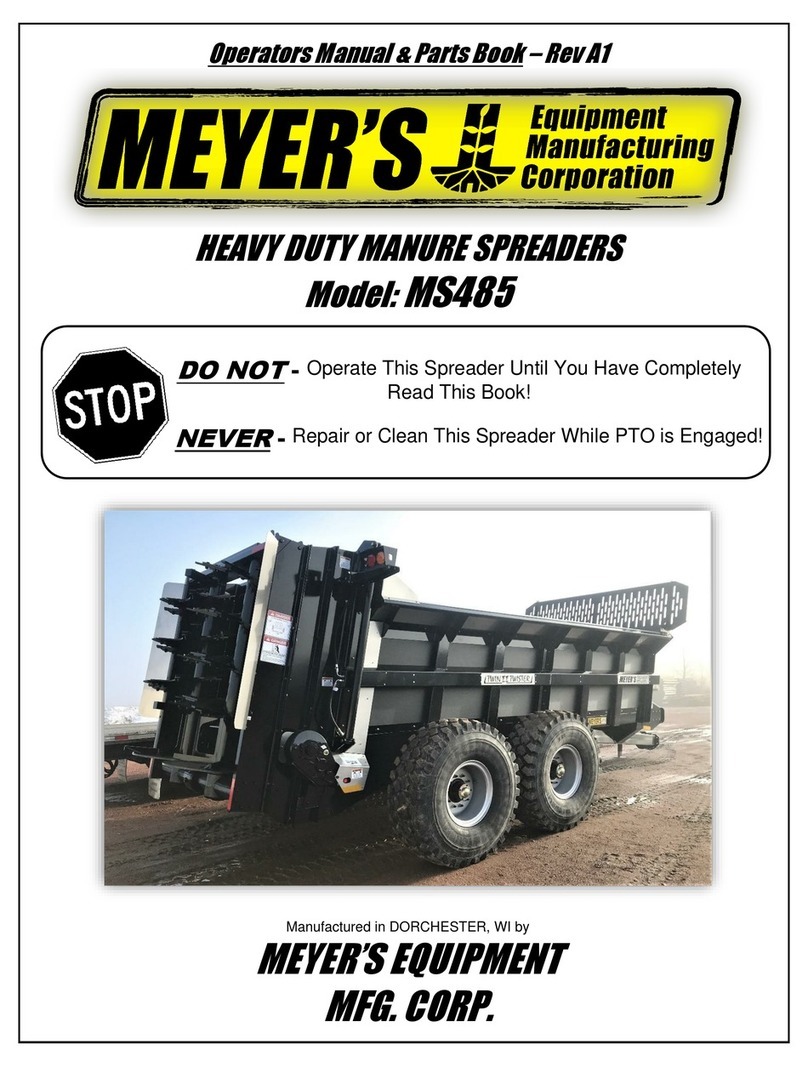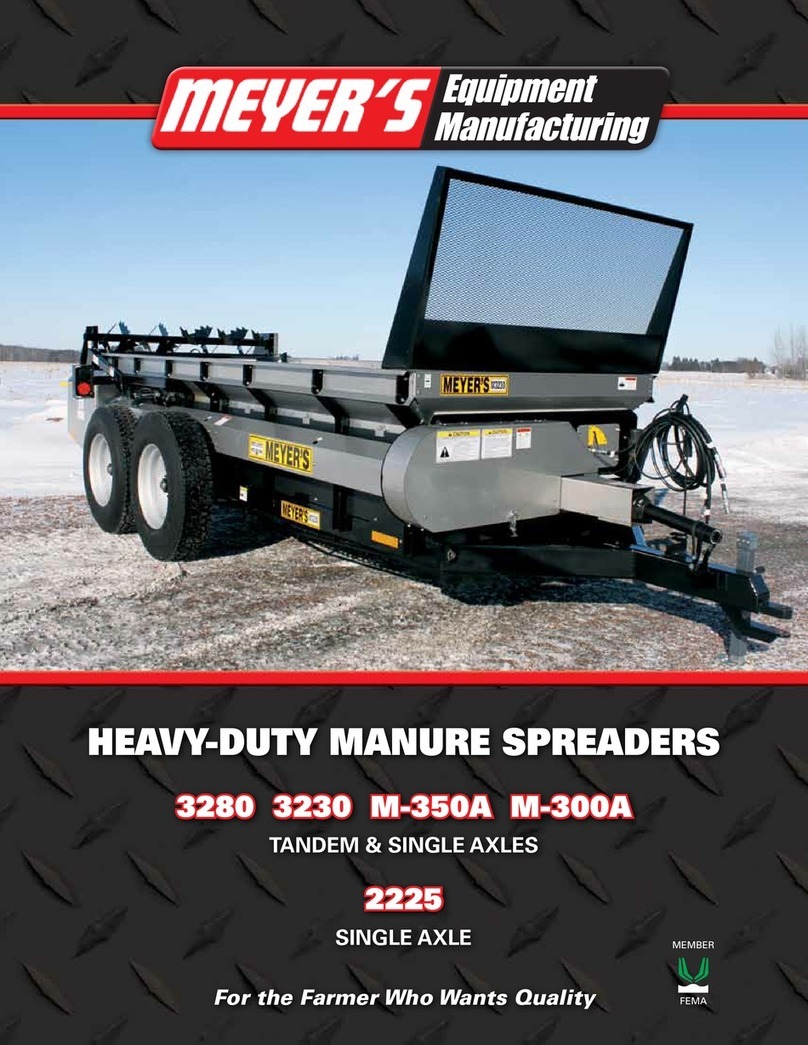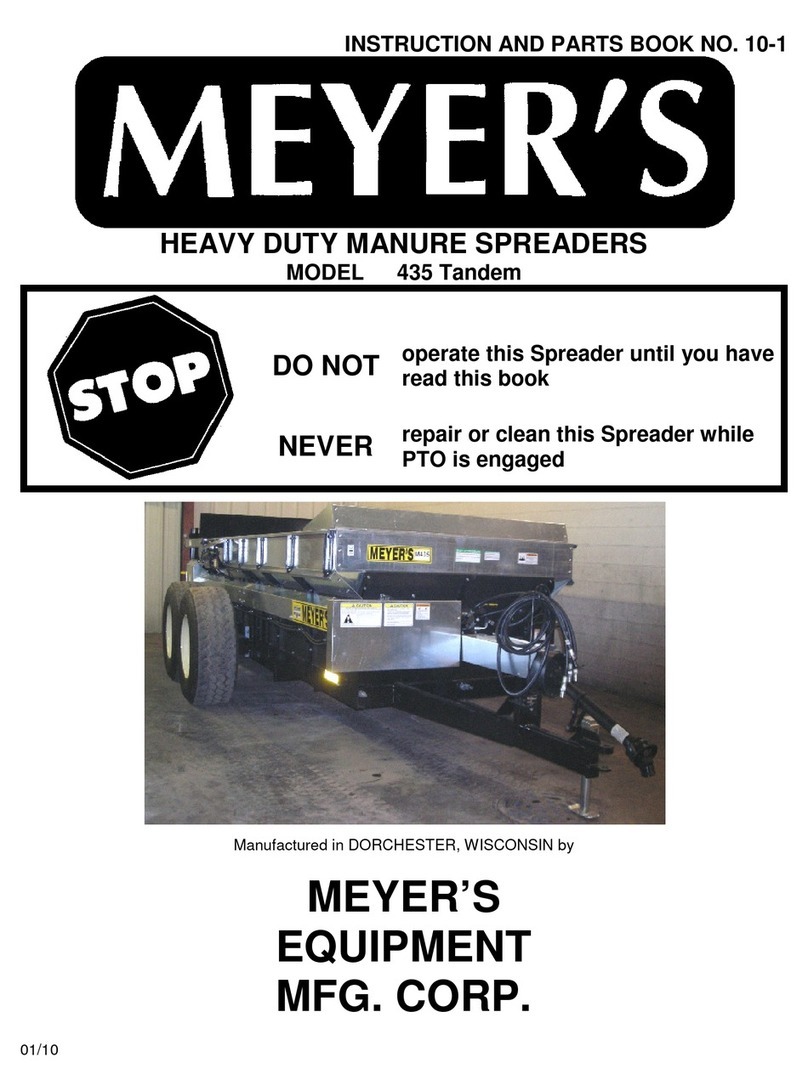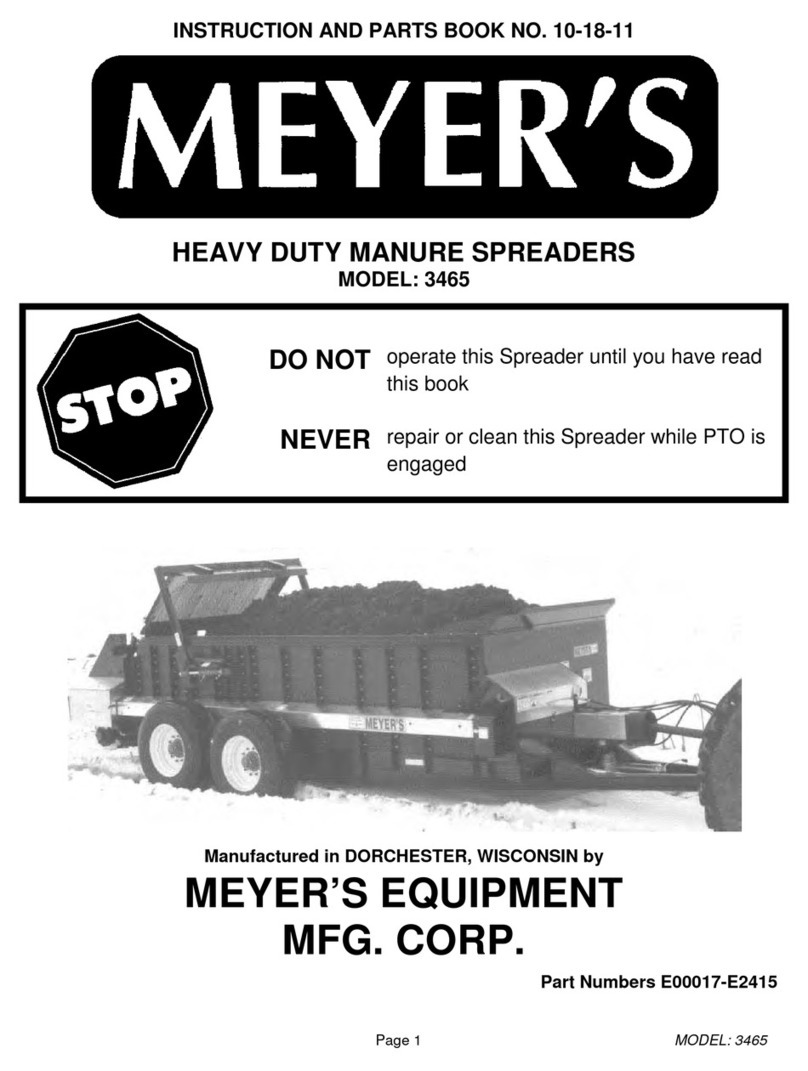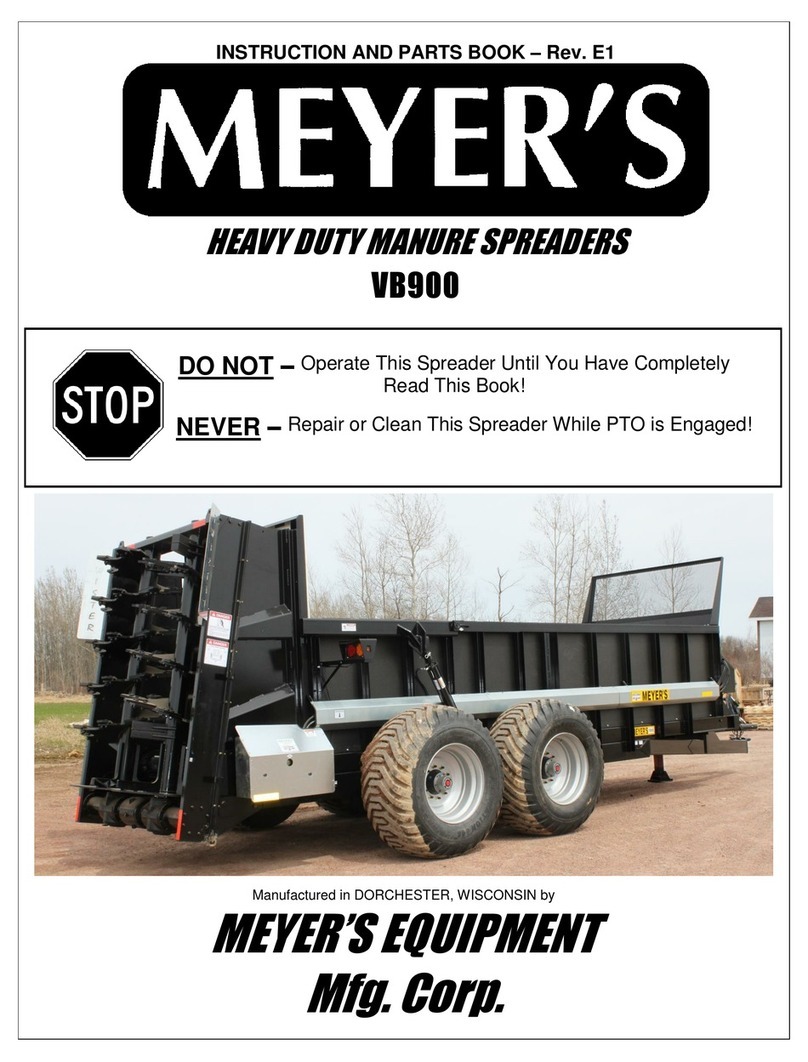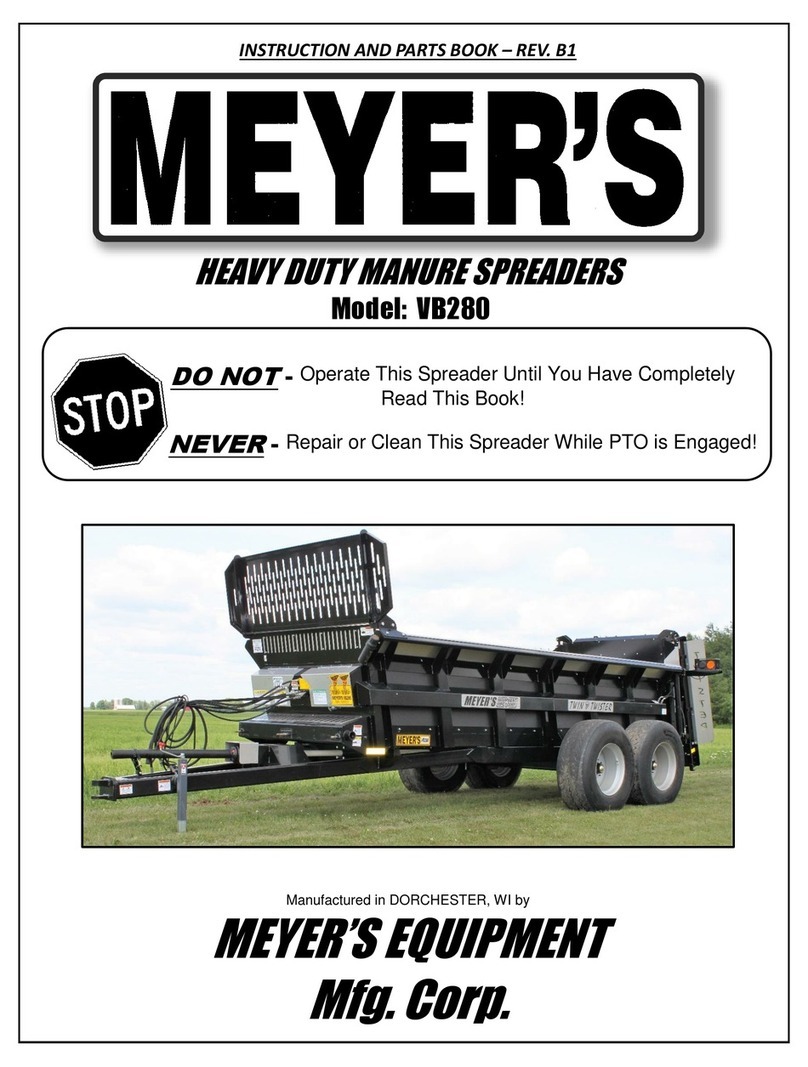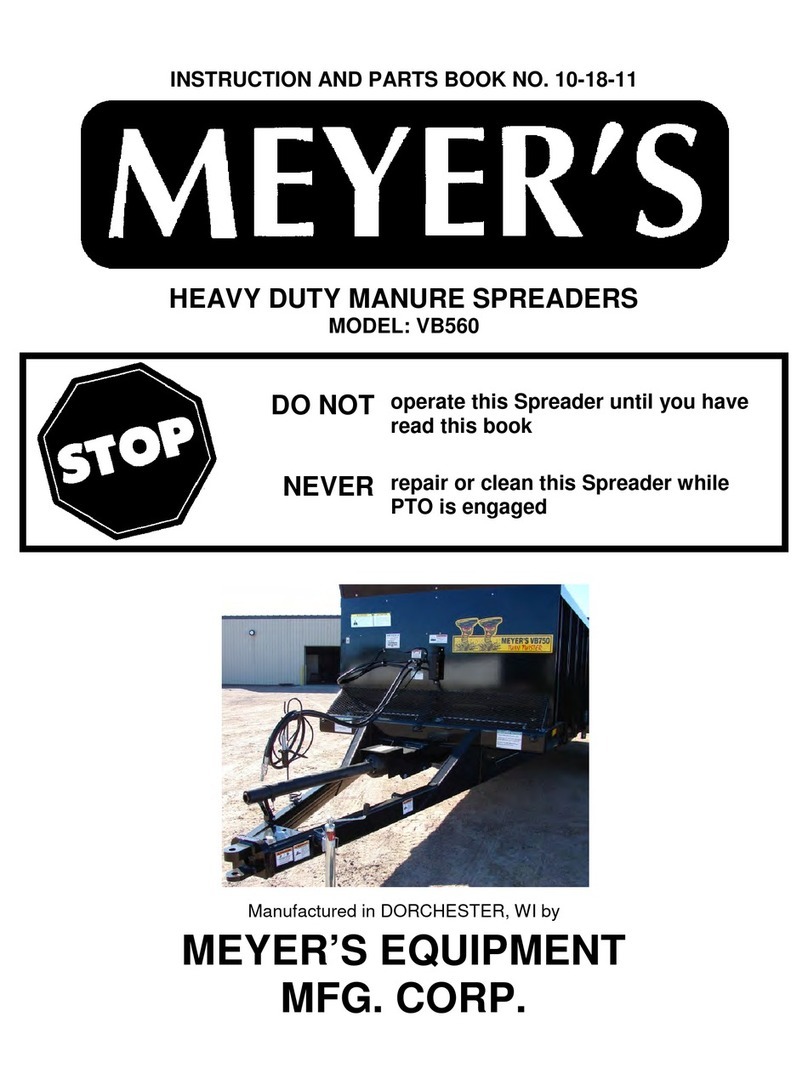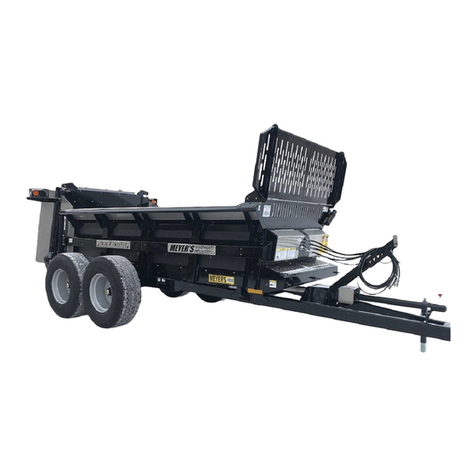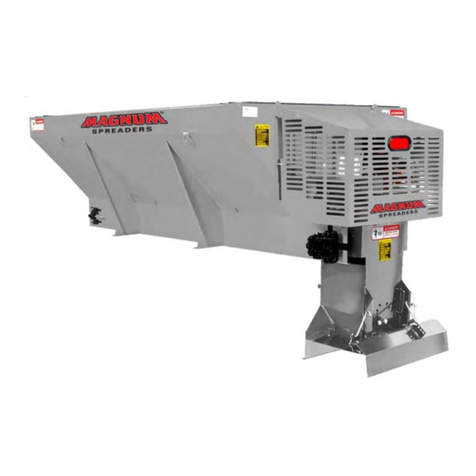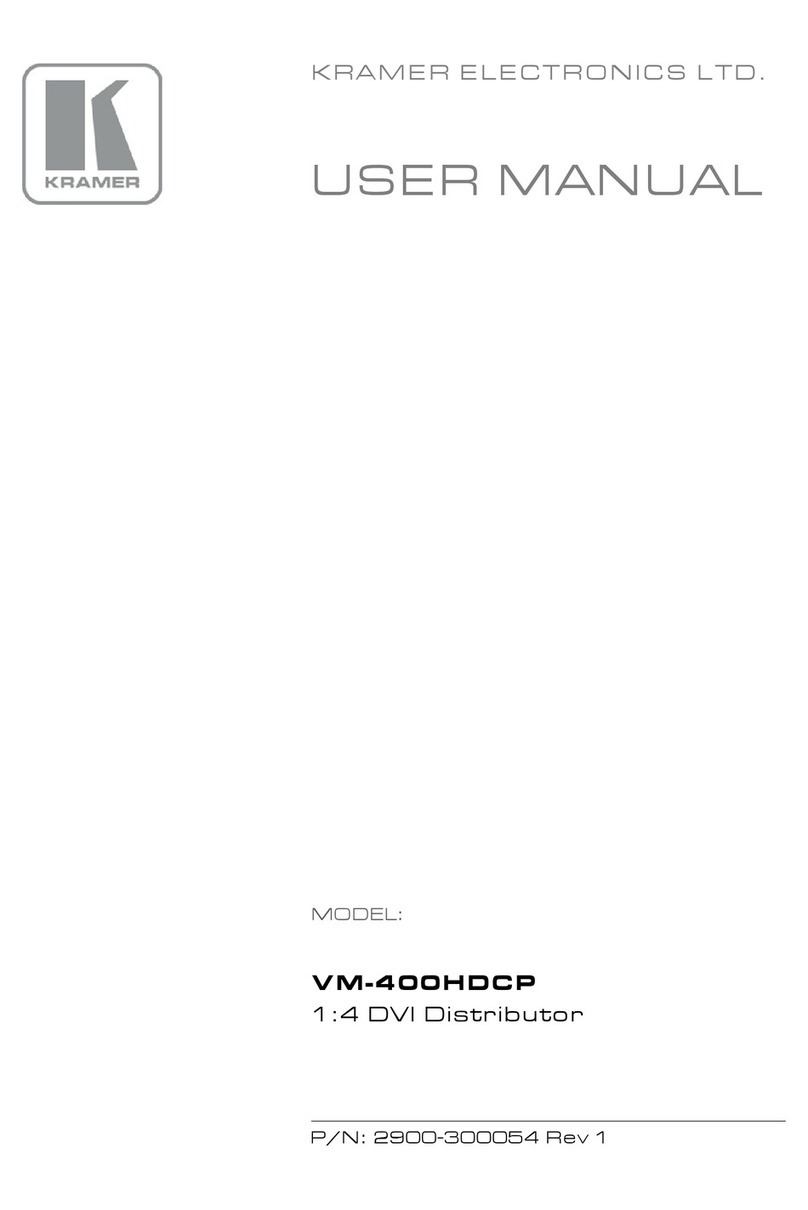
4 | P a g e M o d e l 3 4 6 5
TABLE OF CONTENTS
INTRODUCTION ..................................................................................................................................................... 3
TABLE OF CONTENTS.............................................................................................................................................. 4
SAFETY........................................................................................................................................................... 6
SAFETY SIGNS & DECALS ............................................................................................................................... 6
MANURE SPREADER SAFETY ....................................................................................................................... 10
MANDATORY SAFETY SHUTDOWN PROCEDURE ......................................................................................... 11
PRE-OPERATION .................................................................................................................................................. 12
GENERAL......................................................................................................................................................................12
TRACTOR HITCH &PTO REQUIREMENTS .....................................................................................................................12
TRACTOR SIZE REQUIREMENTS....................................................................................................................................13
Tractor Towing Size Requirements ..............................................................................................................................13
Material - Estimated Weights Per Cubic Foot..............................................................................................................13
HYDRAULIC SYSTEM.....................................................................................................................................................13
General ........................................................................................................................................................................13
Setup for Open or Closed Center Systems....................................................................................................................14
Electric Flow Control Installation .................................................................................................................................14
TRANSPORTING ...........................................................................................................................................................15
General ........................................................................................................................................................................15
Safety Chain Use ..........................................................................................................................................................15
Highway Lighting .........................................................................................................................................................15
OPERATION ......................................................................................................................................................... 16
TRACTOR HOOKUP.......................................................................................................................................................16
LOADING......................................................................................................................................................................16
UNLOADING.................................................................................................................................................................17
MAINTENANCE, ADJUSTMENTS, & LUBRICATION ................................................................................................ 18
WHEELS &TIRES...........................................................................................................................................................18
AUTOMATIC OVER RUNNING CLUTCH .........................................................................................................................18
ADJUSTMENTS .............................................................................................................................................................18
Apron Chain .................................................................................................................................................................18
Roller Chain Adjustment ..............................................................................................................................................18
Tensioning V-Belt Drive................................................................................................................................................18
LUBRICATION ...............................................................................................................................................................19
CLEANING &STORAGE.................................................................................................................................................21
